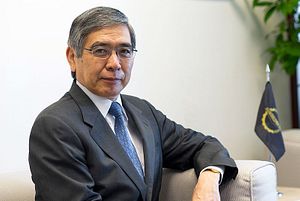Well, we’re officially in uncharted waters for monetary policy in Japan. Early Friday morning, the Bank of Japan announced that it would impose a negative interest rate of -0.1 percent on any new excess reserves. Notably, it did so after having explicitly stated that it wouldn’t consider a negative interest rate policy (NIRP) in early 2016. In the wake of the BoJ’s decision, the yen plunged against other major currencies and two-year Japanese government bond yields sank nearly one percentage point.
The BoJ’s decision takes Japan into an area of monetary policy that was long considered in the country and demonstrates Bank of Japan Governor Haruhiko Kuroda’s propensity for surprise. NIRP has previously been attempted by the European Central Bank. Broadly, policymakers are growing increasingly open to the prospect of negative rates as advanced economies continue to struggle with growth and demand promotion. Kuroda has said that rates may go lower if necessary.
There are a lot of good explainers on what precisely negative rates entail so I won’t go into a deep rehash here (Bloomberg View has a good one), but, in short, what the Bank of Japan decided on Friday was essentially to charge Japanese banks a small fee on any new reserves deposited with the Bank of Japan. This is an important distinction since the policy won’t immediately affect excess funds beyond the required reserves already deposited with the Bank of Japan. (Many state central banks require commercial banks to keep a certain amount of deposited cash on hand—required reserves.)
There’s a particular curiosity to the BoJ’s decision to venture into NIRP now—in January 2016. Broadly, it seems to me that the BoJ’s move primarily signals caution about aggregate demand in the country. With a scheduled consumption tax increase early next year and the broader slowdown in neighboring China, an economy heavily interconnected with Japan’s own, it is likely that demand may be depressed going forward. NIRP could stimulate the Japanese economy by encouraging commercial banks to lend money at nearly no cost.
As I commented in these pages earlier, reflecting on the challenges facing ‘Abenomics’ in 2016 and beyond, Japanese policymakers face a range of economic challenges. Both inflation and unemployment are low, and the country’s absolute labor force size appears to be shrinking. Recession may be inevitable for Japan and primarily caused by the country’s economically unfavorable demography. (A shrinking population will mean a continually shrinking labor force—Japan’s population is expected to go to 86 million in 2060, down from 127 million in 2014.)
The pursuit of NIRP doesn’t suggest that the Bank of Japan will break from its recent trajectory. Quantitative easing will remain in place, but the decision shows that Kuroda hasn’t constrained his toolkit. Expect interesting times ahead in Japanese monetary policy as the Bank of Japan tries to figure out just what—if anything—can break Japan out of its long-standing economic logjam.

































